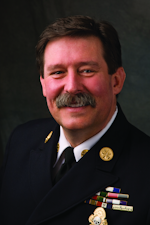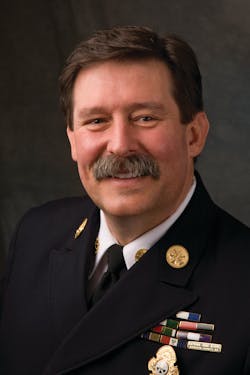As paramilitary organizations, most fire departments have policies that address uniforms, grooming and appearance. While some of the requirements in these policies are based on the need for a standardized professional appearance, others are based on safety concerns. Regardless of the reasoning, uniforms, grooming and appearance policies are often challenged on a variety of grounds, including sex discrimination, race discrimination, religious discrimination, equal protection, free speech and due process.
In the courts
As a general rule, courts tend to uphold reasonable nondiscriminatory uniform, grooming and appearance requirements, whether established for purposes of uniformity, professionalism or safety. Courts have upheld an employer’s right to have different clothing and appearance requirements for men and women without constituting gender discrimination under Title VII of the Civil Rights Act of 1964. The most important factors that courts consider are whether the regulations are in accordance with commonly accepted social norms and reasonably related to the employer’s business needs.
Sex-based differences in uniform and grooming requirements have been struck down when the requirements reflect stereotypical attitudes toward the sexes or are not based on legitimate business necessity. For example, in the case of Carroll v. Talman Federal Savings & Loan Assn., 604 F2d 1028 (7th Cir., 1979), the court found that requiring male employees to wear suits, while requiring females in the same position to wear uniform smocks was discriminatory because it implied that the men were at a higher degree of professional status, and could not be justified as a business necessity.
Religion is another grounds upon which employees have challenged uniform and appearance standards. In 1986, the U.S. Supreme Court upheld a military order that prohibited the wearing of headgear indoors. The Court ruled in Goldman v. Weinberger, 475 U.S. 503 that the military has no duty to accommodate the religious beliefs of an orthodox Jewish rabbi that require him to wear a yarmulke indoors.
In Kelley v. Johnson, 425 U.S. 238 (1976), a police department’s grooming policy that prohibited beards and restricted hair length, sideburns and moustaches was challenged as being a violation of due process, equal protection and the First Amendment right of free expression. The Supreme Court ruled that so long as there is a rational basis for a grooming policy, no constitutionally protected right is violated. The police department’s desire to maintain esprit de corps was considered to constitute a rational basis.
Employers often get in trouble with uniform, grooming and appearance standards when they allow exceptions for one reason, but deny them for another. For example, a police department that prohibits beards but allows an exception for those with medical skin conditions will likely be unable to prohibit a person with a sincerely held religious belief from having a beard.
In the case of Fitzpatrick v. City of Atlanta, 2 F.3d 1112 (11th Cir., 1993), the 11th Circuit upheld a fire department prohibition on beards, including short beards referred to as shadow beards, that potentially interfere with the facepiece seal of SCBA. Firefighters sued claiming racial and religious discrimination over the city’s decision to reinstitute a strict clean-shaven requirement. The court concluded: [T]he City has adduced evidence that safety considerations require firefighters to be clean-shaven, and plaintiffs have not adduced evidence sufficient to call that contention into question. … [I]n order to avoid summary judgment, the firefighters must have … evidence that, when considered along with the City's evidence, creates a genuine issue that the proffered safety justification is, in fact, a pretext for discrimination. The firefighters invoke only one piece of evidence in their attempt to undermine the credibility of the proffered safety justification: the fact that the same occupational safety standards organizations that recommend against the wearing of SCBAs over facial hair also warn that facial conditions such as acne, dentures, glasses, scars, deformities, and deep skin folds can interfere with the safe use of SCBAs. … We find this fact insufficient to create a genuine issue as to the sincerity of the City's claims that it reinstituted the no-beard rule out of concern for safety. … Accordingly, the City is entitled to summary judgment on the Title VII disparate treatment claim.
Regulating tattoos, body piercings, dental ornamentations and even exotic contact lenses raise similar issues. Given the popularity of tattoos in modern society, many departments have had to consider for the first time the need for tattoo policies. The principle areas of controversy with body art involve free speech and religion.
As a general rule, courts have been supportive of departmental efforts to impose reasonable, nondiscriminatory body ornamentation policies and requirements. The most common challenge arises when policies permit some body art but prohibit others. While often well intentioned, such policies raise serious legal concerns over both censorship and discrimination. They place fire officers in the position of making value-based judgments about what body art is permissible and what is not on a case-by-case basis. This creates an environment ripe for controversy and legal challenges.
To avoid such concerns, many departments opt to require personnel with tattoos to cover them up while working and prohibit the wearing of visible piercings, dental ornamentation or exotic contact lenses while on duty.
In a police case from Fort Worth, TX, a court upheld a no-show tattoo policy challenged by an officer assigned to bike patrol who was required to wear long sleeve shirts and long pants year round, claiming it violated his First Amendment Rights. In an often-quoted line from Riggs v. City of Fort Worth, 229 F. Supp. 2d 572 (N.D. Tex. 2002), the court said: “A police officer’s uniform is not a forum for fostering public discourse or expressing one’s personal beliefs.” A similar ruling came from Hartford, CT— Inturri v. City of Hartford, 365 F. Supp. 2d 240 (D. Conn. 2005)—where a police officer challenged a cover-up tattoo policy.
Conclusion
Uniform, grooming and appearance policies are common, necessary and routinely upheld by the courts provided they are based upon reasonable, nondiscriminatory and business-related concerns. To be upheld, policies must be consistently applied as even one well-intentioned exception can open the door to “me-too” demands.
Policies that require value-based judgments about what is proper, offensive or inappropriate create the potential for legal challenges. While it is possible to draft policies that allow some tattoos and not others, such policies tend to invite problems. For that reason, many organizations have opted for a tattoo cover-up policy, along with a prohibition on visible body piercings, dental ornamentations and exotic contact lenses.

Curt Varone
CURT VARONE has more than 40 years of experience in the fire service, including 29 years as a career firefighter with Providence, RI, retiring as a deputy assistant chief (shift commander). He is a practicing attorney who is licensed in Maine and Rhode Island and served as the director of the Public Fire Protection Division at the NFPA. Varone is the author of two books, "Legal Considerations for Fire and Emergency Services" and "Fire Officer's Legal Handbook," and remains active as a deputy chief in Exeter, RI.






